|
|
Main » Entries archive
IntroductionThe term “blotting” refers to the transfer of biological samples from a gel to a membrane and their subsequent detection on the surface of the membrane. Western blotting (also called immunoblotting because an antibody is used to specifically detect its antigen) was introduced by Towbin, et al. in 1979 and is now a routine technique for protein analysis. The specificity of the antibody-antigen interaction enables a single protein to be identified in the midst of a complex protein mixture. Western blotting is commonly used to positively identify a specific protein in a complex mixture and to obtain qualitative and semiquantitative data about that protein. The first step in a Western blotting procedure is to separate the macromolecules using gel electrophoresis. Following electrophoresis, the separated molecules are transferred or blotted onto
...
Read more »
Views: 1570 |
Added by: anis |
Date: 2009-09-16
|
|
Protein Interactions
Introduction to Protein InteractionsImportance of Protein InteractionsThe study of protein interactions has been vital to the understanding of how proteins function within the cell. Publication of the draft sequence of the human genome and proteomics-based protein profiling studies catalyzed a resurgence in protein interaction analysis. Characterizing the interactions of proteins in a given cellular proteome (now often referred to as the “interactome”) will be the next milestone along the road to understanding the biochemistry of the cell. The ~ 30,000 genes of the human genome are speculated to give rise to 1 x 10(6) proteins through a series of post-translational modifications and gene-splicing mechanisms. Although a population of these proteins can be expected to work in relative isolation, the majority are
...
Read more »
Views: 731 |
Added by: anis |
Date: 2009-09-16
|
|
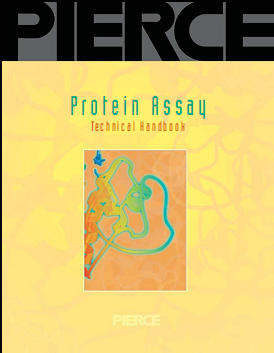 Total Protein Assays
Introduction
Protein quantitation is often necessary prior to handling protein samples for isolation and characterization. It is a required step before submitting protein samples for chromatographic, electrophoretic and immunochemical separation or analyses. The most common methods for the colorimetric detection and quantitation of total protein can be divided into two groups based upon the chemistry involved. Protein assay reagents involve either protein-dye binding chemistry (coomassie/ Bradford) or protein-copper chelation chemistry. Pierce offers seven colorimetric assays for detection and quantitation of total protein. They are all well-characterized, robust assays that provide consistent, reliable results. Collectively, they represent the state-of-the-art for colorimetric detection and quantitation
...
Read more »
Views: 21502 |
Added by: anis |
Date: 2009-09-16
|
|
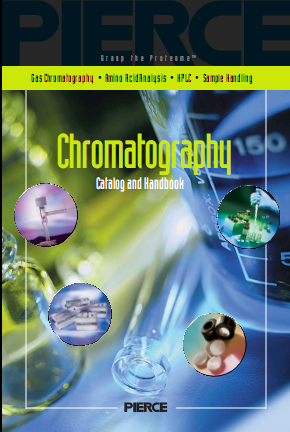 Introduction to Gas ChromatographySilylation and Silylation ReagentsNo one but Pierce offers the combination of variety, quality and reliability. Derivatization The chemical literature contains an abundance of data on derivatization, most of which is relevant to particular compounds, classes of compounds and derivatization reagents. Two books are recognized as standards in the field of analytical derivatization. The first book, Handbook of Analytical Derivatization Reactions by Daniel R. Knapp (see page 36), provides a general collection of analytical derivatization methods for chromatography and mass spectroscopy (MS) that involves formation of covalent derivatives prior to analysis. The second book, Silylation of Organic Compounds by Alan F. Pierce2, “is a significant factor in the transfer of silylation reactions from the relatively e
...
Read more »
Views: 759 |
Added by: anis |
Date: 2009-09-16
|
|
 Blocking Unoccupied SitesIn an ELISA, it is important to block the unoccupied sites on the surface of the well to reduce the amount of nonspecific binding of proteins during subsequent steps in the assay. A variety of blocking buffers ranging from nonfat milk to highly purified proteins have been used to block unreacted sites. The blocking buffer should improve the sensitivity of the assay by reducing the background interference. An individual blocking buffer will not be compatible with every system; for this reason, a variety of blockers in both Tris buffered saline (TBS) and phosphate buffered saline (PBS) are available. The proper choice of blocker for a given assay depends on the antigen itself and on the type of enzyme conjugate to be used. For example, with applications using an alkaline phosphatase conjugate, a blocking buffer in TBS should be sele
...
Read more »
Views: 744 |
Added by: anis |
Date: 2009-09-16
|
|
Chemical cross-linking reagents have become an invaluable tool in the scientific community. These reagents are used in preparing antibody-enzyme conjugates and other labeled protein reagents. After the protein is conjugated to an appropriate enzyme, it may then be used as a detection reagent in a variety of assays and applications. A number of cross-linking methods have been used to prepare enzyme conjugates. For example, an N-hydroxysuccinimide ester can be prepared from a ligand of interest, then reacted with a primary amine on the surface of the enzyme. While this method is necessary in some applications, such as those in which the ligand does not contain a primary amine, it is not useful as a general-purpose method. Full PDF
Views: 774 |
Added by: anis |
Date: 2009-09-16
|
|
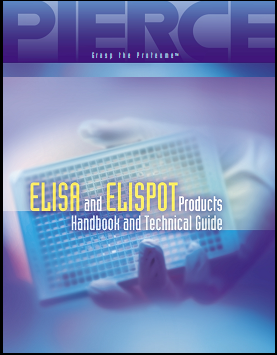
Enzyme-linked immunosorbent assays (ELISAs) are designed for detecting and quantitating substances such as peptides, proteins, antibodies and hormones. Other names, such as enzyme immunoassay (EIA), are also used to describe the same process. In an ELISA, an antigen must be immobilized to a solid surface. The antigen is then complexed with an antibody that is linked to an enzyme. Detection is accomplished by incubating this enzyme-complex with a substrate that produces a detectable product. The most crucial element of the detection strategy is a highly specific antibody-antigen interaction. Most commonly, ELISAs are performed in 96-well (or 384-well) polystyrene plates, which will passively bind antibodies and proteins. It is this binding and immobilization of reagents that makes ELISAs so easy to design and perform, as first described by Eva Engvall, et a
...
Read more »
Views: 10326 |
Added by: anis |
Date: 2009-09-16
|
|
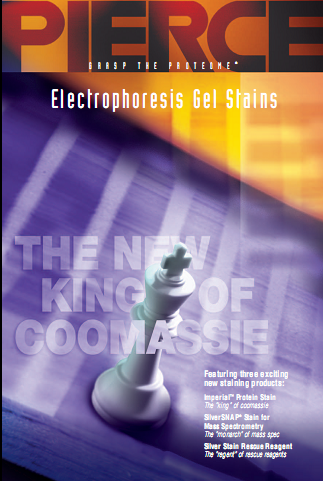 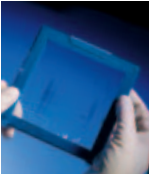 The staining of protein bands on gels after electrophoresis is one of the most routinely performed protocols in the life science laboratory. Because significant time is invested in preparing reagents, staining and destaining, even the simplest staining protocols can be tedious and take hours to complete. Pierce Gel Stains provide speed, simplicity, convenience and economy over both homemade and other commercially available staining products. Life scientists around the world now look to Pierce Stains for speed, ease-of-use, sensitivity, superior results and economy. This brochure summarizes the key features and benefits of several Pierce Staining Products that represent clear improvements in staining technology. Easy-to-follow protocols with schematics demonstrate just how easy s
...
Read more »
Views: 813 |
Added by: anis |
Date: 2009-09-16
|
|
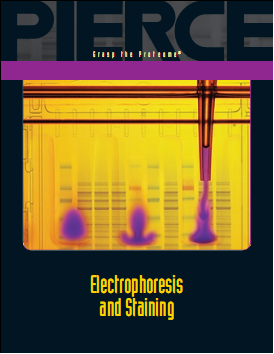
Gel Electrophoresis of ProteinsGel electrophoresis is a technique in which charged molecules, such as protein or DNA, are separated according to physical properties as they are forced through a gel by an electrical current. Proteins are commonly separated using polyacrylamide gel electrophoresis (PAGE) to characterize individual proteins in a complex sample or to examine multiple proteins within a single sample. PAGE can be used as a preparative tool to obtain a pure protein sample, or as an analytical tool to provide information on the mass, charge, purity or presence of a protein. Several forms of PAGE exist and can provide different types of information about the protein(s). • Nondenaturing PAGE, also called native PAGE, separates proteins according to their mass:charge ratio • SDS-PAGE, the most widely used electrophoresis technique, separat
...
Read more »
Views: 725 |
Added by: anis |
Date: 2009-09-16
|
|
Move Your Research Forward Faster with EZ-Link™ Biotinylation Reagents
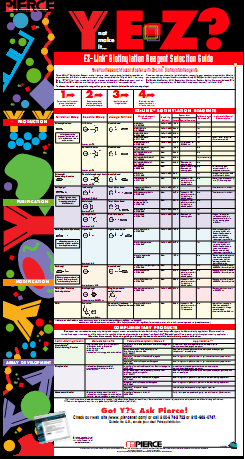
Pierce EZ-Link ™ Biotinylation Reagents make it easy to label any molecule (antibodies, peptides or oligonucleotides) with biotin to create a number of assay formats. Avidin’s affinity for biotin is so strong (Ka = 10-15 M-1) that it can survive boiling, pH extremes and detergents. Chaotropic agents such as 8M Guanidine•HCl or 6M Urea are the only agents that can dissociate this non-covalent bond. Pierce can help you choose the right biotinylation reagent for your experimental applications. Whether you are performing Enzyme-Linked Immunosorbent Assay (ELISA), Western Blotting, Immunohistochemistry, Cell Surface Modification, Affinity Separations, Northern or Southern Blotting, Fluorescent Activated Cell Sorting, or Immunoprecipitation, the Avidin-Biotin complex can be used. Y not mak
...
Read more »
Views: 821 |
Added by: anis |
Date: 2009-09-16
|
|
|
| Calendar |
|---|
| « April 2024 » | | Su | Mo | Tu | We | Th | Fr | Sa | | | 1 | 2 | 3 | 4 | 5 | 6 | | 7 | 8 | 9 | 10 | 11 | 12 | 13 | | 14 | 15 | 16 | 17 | 18 | 19 | 20 | | 21 | 22 | 23 | 24 | 25 | 26 | 27 | | 28 | 29 | 30 |
|
| Statistics |
|---|
Total online: 1 Guests: 1 Users: 0 |
|

